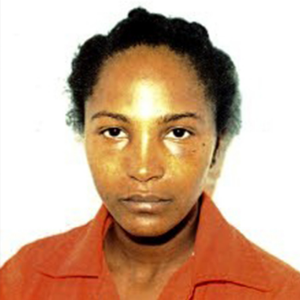
The Buggery Act 1533, formally An Acte for the punishment of the vice of Buggerie, was an Act of the Parliament of England that was passed during the reign of Henry VIII.
Molly house or molly-house was a term used in 18th- and 19th-century Britain for a meeting place for homosexual men and gender-nonconforming people. The meeting places were generally taverns, public houses, coffeehouses or even private rooms where men could either socialise or meet possible sexual partners.

The following is the timeline of lesbian, gay, bisexual, and transgender (LGBT) history.
Zināʾ (زِنَاء) or zinā is an Islamic legal term referring to unlawful sexual intercourse. According to traditional jurisprudence, zina can include adultery, fornication, prostitution, rape, sodomy, incest, and bestiality. Zina must be proved by testimony of four Muslim eyewitnesses to the actual act of penetration, or a confession repeated four times and not retracted later. The offenders must have acted of their own free will. Rapists could be prosecuted under different legal categories which used normal evidentiary rules. Making an accusation of zina without presenting the required eyewitnesses is called qadhf (القذف), which is itself a hudud offense.
The Aberdeen Scandal was a military sexual assault scandal in 1996 at Aberdeen Proving Ground, a United States Army base in Maryland.

Martin v. Ziherl, 607 S.E.2d 367, was a decision by the Supreme Court of Virginia holding that the Virginia criminal law against fornication was unconstitutional. The court's decision followed the 2003 ruling of the U.S. Supreme Court in Lawrence v. Texas, which established the constitutionally-protected right of adults to engage in private, consensual sex.
Anne Stanley was an English noblewoman. She was the eldest daughter of the Earl of Derby and, through her two marriages, became Baroness Chandos and later Countess of Castlehaven. She was a distant relative of Elizabeth I of England and for some time was seen as a possible heiress to the English throne.
Rajm in Islam refers to the Hudud punishment wherein an organized group throws stones at a convicted individual until that person dies. Under some versions of Islamic law (Sharia), it is the prescribed punishment in cases of adultery committed by a married person which requires either a confession from either the adulterer or adulteress, or producing four witnesses of sexual penetration.
Catharina is a feminine given name, the Dutch and Swedish spelling of the name Catherine. In the Netherlands, people use a great number of short forms in daily life, including Carine, Catelijne, Cato, Ina, Ineke, Kaat, Kaatje, Karen, Karin, Katja, Katrien, Katrijn, Kitty, Nienke, Rina, Tineke, Tiny, Toos, Trijn, Trijntje, and many others. People with the name include:
Maouloud Baby v. State of Maryland is a Maryland state court case relating to the ability to withdraw sexual consent.

Wanda Jean Allen was sentenced to death in 1989 for the murder of Gloria Jean Leathers, 29, her longtime girlfriend. Allen was the first black woman to be executed in the United States since 1954. She was the sixth woman to be executed since executions resumed in the United States of America in 1977. Her final appeals and the last three months of her life were chronicled by filmmaker Ivana Barrios in the documentary The Execution of Wanda Jean (2002).

Sodomy, also called buggery in British English, generally refers to either anal sex between people, or any sexual activity between a human and another animal (bestiality). It may also mean any non-procreative sexual activity. Originally, the term sodomy, which is derived from the story of Sodom and Gomorrah in the Book of Genesis, was commonly restricted to homosexual anal sex. Sodomy laws in many countries criminalized the behavior. In the Western world, many of these laws have been overturned or are routinely not enforced. A person who practices sodomy is sometimes referred to as a sodomite, a pejorative term.

A sodomy law is a law that defines certain sexual acts as crimes. The precise sexual acts meant by the term sodomy are rarely spelled out in the law but are typically understood by courts to include any sexual act deemed to be "unnatural" or "immoral". Sodomy typically includes anal sex, oral sex, manual sex, and bestiality. In practice, sodomy laws have rarely been enforced against heterosexual couples, and have mostly been used to target homosexual couples.
This is a list of events in Lesbian, Gay, Bisexual, Transgender, Queer and Intersex (LGBTQ+) history in Germany.

Karin Svensdotter was a 17th-century Swedish woman who claimed to have had children with the King of the fairies.
In medieval Europe, attitudes toward homosexuality varied from region to region, determined by religious culture; the Catholic Church, which dominated the religious landscape, considered, and still considers, sodomy as a mortal sin and a "crime against nature". By the 11th century, "sodomy" was increasingly viewed as a serious moral crime and punishable by mutilation or death. Medieval records reflect this growing concern. The emergence of heretical groups, such as the Cathars and Waldensians, witnesses a rise in allegations of unnatural sexual conduct against such heretics as part of the war against heresy in Christendom. Accusations of sodomy and "unnatural acts" were levelled against the Order of the Knights Templar in 1307 as part of Philip IV of France's attempt to suppress the order. These allegations have been dismissed by some scholars.
Katherina Hetzeldorfer was recorded as the first woman to be executed for female homosexuality. She was drowned in the Rhine in Speyer.
Sven Andersson (1668–1691), was a Swedish farmhand from Vättle in Västergötland, who was executed for having sexual intercourse with a bergrå. The case is often quoted to illustrate the cases where humans were sentenced to death accused of having sexual relations with mythical creatures, and was likely the last one of such cases in Sweden. It also provides a good illustration of the phenomenon known as bergtagning, which is a well-attested belief in old Scandinavia.
Daniel Ken Holtzclaw is a former police officer in the United States. He was convicted in December 2015 of multiple counts of rape, sexual battery, and other sex offenses while working for the Oklahoma City Police Department.
Female sodomy is a general category of sexual or erotic activities enacted between women. It was codified as a legal category in medieval and early modern Europe, although it differed greatly between regions. Female sodomy is distinct from the social and legal category of (male) sodomy due to the significant differences in the way women accused of sodomy were seen in society and treated within the court system. A person who commits sodomy is sometimes referred to as a sodomite. Notable historical female sodomites include Katherina Hetzeldorfer and Benedetta Carlini.







